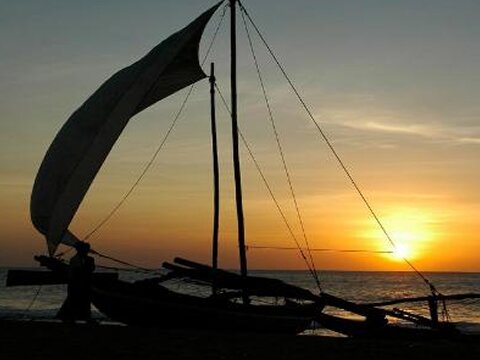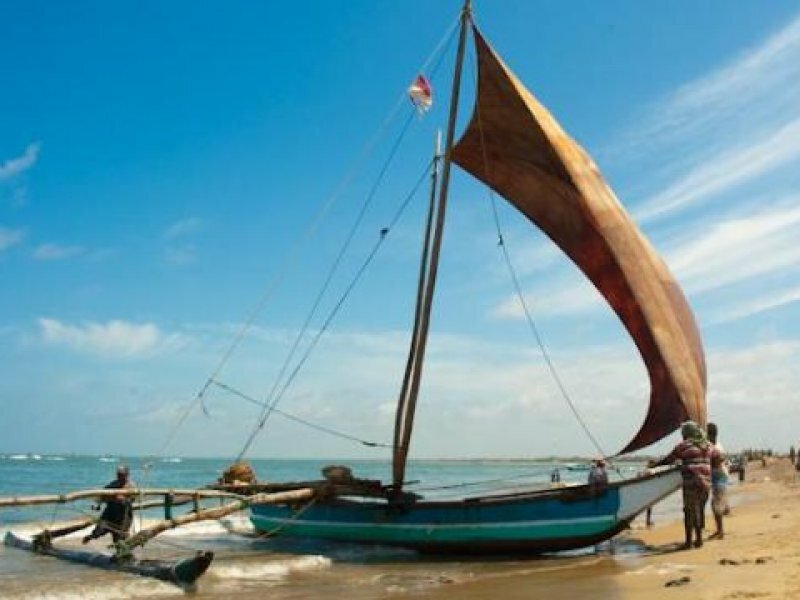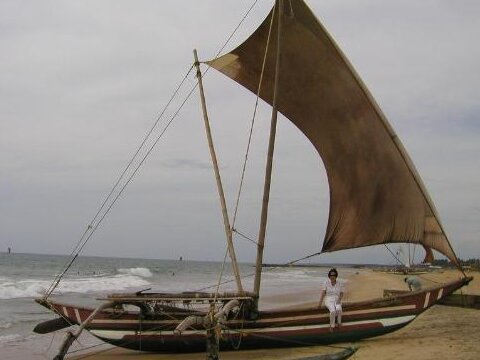History
The origin of the oruwa dates back more than a thousand years to the Indonesian empire of Srivijava in the 8th century. The world’s oldest picture of an ocean going outrigger craft is found in the Buddhist temple of Boro Budur in Java.
The Srivijava Empire stretched over the whole of the Indian Ocean to Madagascar and outrigger canoes were previously found all along the rim of the Indian Ocean. Today some fishermen in Madagascar still use a double sprit sailing rig identical to the one on the bala-oruwa. Until mid 1930 the large Yathra- Oruwa of 50 tons capacity was utilized for trading along the shore of Sri Lanka and to India.
The oruwa as we know it today is a comparatively recent craft. According to oral tradition, it first appeared about 150 years ago. Before that time fishing along the coast of Sri Lanka, at that time called ,Ceylon´, was confined to lagoons where men netted prawns from small dugout canoes. Later the prawns were used as bait and the fishermen ventured out to sea. The canoes became longer and their sides were built up with washboards for protection against the sea and surf.
The type square sail is said to have originated when a fisherman hung his sarong between two oars and discovered that the wind could drive his canoe faster than any man could paddle. The oars grew into masts, and the sarong into a large rectangular sail. The last refinement was the heavy steering oar that was added about a century ago to give the craft a semblance of a keel.
Over the centuries the oruwa has evolved to become an extremely sophisticated sailing craft taking into account the local materials available.






